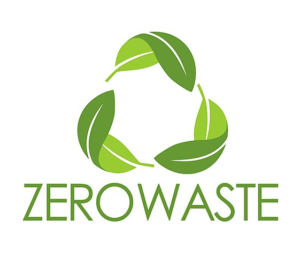
Littering is a pervasive issue that affects communities, wildlife, and natural ecosystems around the globe. It is often dismissed as a minor problem, yet its cumulative effects are far-reaching and severe. Examining the impact of litter on the environment reveals not only the immediate aesthetic and health concerns but also the long-term ecological damage and economic costs associated with it.
Environmental Impact
Soil and Water Contamination
- Leaching of Toxins: Many types of litter, such as plastic, contain toxic chemicals that leach into the soil and water as they break down. This contamination can harm plant life, reduce soil fertility, and pollute water sources.
- Pollution: Litter in water bodies can introduce pollutants that affect water quality, harming aquatic life and making water unsafe for human use.
Harm to Wildlife
- Ingestion: Animals often mistake litter for food. Ingesting non-biodegradable materials like plastics can block their digestive systems, leading to malnutrition, starvation, and death.
- Entanglement: Wildlife can become entangled in items like fishing lines, plastic bags, and six-pack rings, causing injury, drowning, or suffocation.
- Habitat Disruption: Litter can alter habitats, making them unsuitable for native species. For example, plastic debris on beaches can prevent sea turtles from nesting.

Ecosystem Disruption
- Invasive Species: Litter can transport invasive species to new locations, where they may outcompete native species and disrupt local ecosystems.
- Physical Alteration: Accumulated litter can change the physical environment, such as blocking sunlight from reaching aquatic plants or covering the ground in terrestrial ecosystems, which affects plant growth and soil health.
Cleanup Costs
- Municipal Budgets: Cities and towns spend significant amounts of money on litter cleanup, diverting resources from other essential services.
- Tourism: Areas with high levels of litter are less attractive to tourists, reducing income for local businesses and communities.
Property Values
- Devaluation: Littered areas often experience a decline in property values, negatively impacting the wealth and well-being of residents.
Public Health Impact

Health Hazards
- Direct Injury: Sharp objects like broken glass and metal can cause injuries. Contaminated needles pose a risk of disease transmission.
- Disease Vectors: Accumulated litter can attract pests such as rats and mosquitoes, which are vectors for diseases like Zika, West Nile virus, and others.
Mental Health
- Quality of Life: Living in littered environments can affect mental well-being, contributing to feelings of neglect and reducing community pride.
Community Aesthetics
- Decreased Beauty: Litter degrades the visual appeal of communities, parks, and natural areas.
- Social Behavior: The presence of litter can create a cycle of neglect, where more people feel inclined to litter because the area already appears uncared for (the broken windows theory).
Public Safety
- Crime Rates: Areas with high levels of litter may experience higher crime rates, as the presence of trash can signal neglect and a lack of community investment.
Solutions
Addressing the litter problem involves several strategies:
Education and Awareness

- Public Campaigns: Educating people about the environmental impact of litter and encouraging responsible behavior.
- School Programs: Incorporating environmental education into school curriculums to instill good habits from a young age.
Policy and Legislation
- Fines and Penalties: Implementing and enforcing fines for littering.
- Recycling Programs: Establishing and promoting recycling initiatives to reduce waste.
Community Involvement
- Clean-Up Events: Organizing community clean-up events to foster a sense of responsibility and collective action.
- Volunteer Programs: Encouraging volunteerism to maintain public spaces.
Technological Innovation
- Smart Bins: Using bins that signal when they need to be emptied to prevent overflow.
- Litter Monitoring: Utilizing drones and other technology to monitor and manage litter in hard-to-reach areas.

More Stories
Living Green: 4 Simple Everyday Habits for a Sustainable Future
Photo: Zero Waste Tea If you want practical tips on how to contribute to green living in your daily life,...
The Environmental Toll of Fast Fashion: A Closer Look at Textile Waste
Photo: Mumtahina Rahman In recent decades, the fashion industry has had significant changes, fueling the rise of fast fashion. While...
Addressing Biodiversity Loss: Strategies and Eco-Responses
Photo: Pit and Mount Microtopography Biodiversity loss has far-reaching challenges on economies, and human well-being. Similarly, pollution, overexploitation of natural...
Sustainable Dining: A Path to Eco-Friendly Eating by Tackling Food Waste
Photo: Michael Gabler Today more than ever, being environmentally conscious is a part of our daily lifestyle and one of...


